http://www.rhci-online.net/radiogram/radiogram.htm
http://www.rhci-online.net/radiogram/radiogram.htm
|
RSID: <<2018-06-27T20:25Z MFSK-32 @ 6070000+1500>>
START IBC - ITALIAN BROADCASTING CORPORATION
mail: ibc@europe.com
IBC first broadcast on 3 JULY
1979 - 39° ANNIVERSARY
|
|
|
RSID: <<2018-06- 30T15:30ZMFSK-64 @ 9400000+1500>>
The KBC ship is not at its usual berth in Harlingen.
|
|
The LV Jenni Baynton disappeared between June 14th and 15th from her usual berth. Animated GIF of webcam Harlingen-Zuiderpier

http://www.lookr.com/de/lookout/1400995681-Harlingen#action-play-month
https://www.facebook.com/Offshore-2018-Jenni-Baynton-1811445719163657/
"......Bezoek radioschip op volle zee!
Het radiolichtschip Jenni Baynton gaat in augustus en september voor anker op volle zee. Er wordt dan aan boord live radio gemaakt.
Een unieke kans om eens te kijken hoe radio op zee wordt gemaakt. Op zaterdag 25 en zondag 26 augustus vaart er om 08.30, 12.00 en 15.00 uur
een tender op en neer en belangstellenden kunnen meevaren om gast te zijn aan boord van het radioschip......"

RSID: <<2018-06-30T16:01Z
MFSK-32 @
9400000+1500>>
Welcome to program 54 of Shortwave Radiogram.
I'm Kim Andrew Elliott in Arlington, Virginia USA.
Here is the lineup for today's program, in modes as noted:
1:39 MFSK32: Program preview (now)
3:00 Japan's Hayabusa2 spacecraft arrives at asteroid Ryugu*
7:58 8PSK-125F: The world is losing vital forests
9:41 8PSK-250F: Forests, continued
10:48 MFSK64: Radio Prague in 1968*
18:15 This week's images*
26:40 MFSK32: Closing announcements*
* with image(s)
Please send reception reports to
radiogram@verizon.net
And visit http://swradiogram.net
Twitter:
@SWRadiogram
From Science News:
Japan's Hayabusa2 spacecraft arrives at the asteroid Ryugu
Maria Temming
27 June 2018
After more than three years' lonely travel through the solar
system, the Japanese spacefaring robot Hayabusa2 has reached its
home-away-from-home for the next 18 months: the near-Earth
asteroid Ryugu.
The Japanese Aerospace Exploration Agency on June 27 confirmed
Hayabusa2's arrival at the kilometer-wide boulder, which circles
the sun between Earth and Mars. The spacecraft is now hovering
about 20 kilometers above Ryugu.
Over the next several months, the spacecraft will touch down on
the asteroid three times to gather samples, as well as deploy
four landing probes to further explore Ryugu's surface. Hayabusa2
will return to Earth with its cache of space rock near the end of
2020. It follows in the footsteps of the original Hayabusa, which
brought back samples from a different asteroid in 2010.
Analyzing bits of Ryugu's ancient, carbon-rich rock could give
new insights into the composition of the early solar system and
the origins of life. For instance, the samples could help confirm
whether asteroids carry the simple sugar called ribose, which is
an essential chemical component in the cells of every Earthling.
If so, that raises the possibility that ribose arrived on Earth
from elsewhere in outer space, rather than forming here on its
own.
https://www.sciencenews.org/blog/science-ticker/japan-hayabusa2-spacecraft-arrives-asteroid-ryugu
See also:
https://www.voanews.com/a/japan-space-explorer-arrives-at-asteroid-to-collect-samples/4456403.html
https://www.dw.com/en/japan-and-germany-work-jointly-on-ryugu-asteroid-capture/a-44415646
https://www3.nhk.or.jp/nhkworld/en/news/20180627_20/
Image: Artist's concept of the Hayabusa2 craft approaching the
surface of the asteroid Ryugu ...
Sending Pic:226x140C;
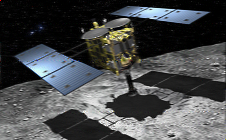
Shortwave Radiogram now changes to 8PSK-125F ...
RSID: <<2018-06-30T16:07Z 8PSK-125F @ 9400000+1500>>
This is Shortwave Radiogram in 8PSK-125F
Please send reception reports to
radiogram@verizon.net
From Deutsche Welle:
The world is losing vital forests quicker than ever
The years 2016 and 2017 saw the
highest global tree cover
loss ever recorded. Tropical
forests in South America and
Central Africa are disappearing at an
alarming rate. Here's
why that's bad news for everyone.
Katharina Wecker
27 June 2018
Forests provide us with shelter, food, fuel security, and water.
Around 80 percent of the world's land-based animal and plant
species are found in forests.
Trees also play a critical role in cleaning the air we breathe,
and function as the largest land-based storehouses of CO2. Only
oceans absorb more of the greenhouse gases that are changing our
climate.
When forests disappear, so do entire ecosystems. And this has
dire consequences for all of us.
Yet, despite all this, we keep chopping down more trees than grow
back, experts warn.
In 2017, the world lost 29.4 million hectares (72.6 million
acres) of tree cover — more than double the size of Germany. This
was only slightly down from the 2016 record of 29.7 million
hectares (73.4 million acres), according to new data by Global
Forest Watch.
"The numbers are not looking good," says Frances Seymour, forest
expert at the United States think thank World Resources Institute
(WRI), which oversees Global Forest Watch.
Forests are being cleared for soy, beef, palm oil, and other
globally traded commodities.
"Much of this clearing is illegal and linked to corruption," says
Seymour.
Natural disasters such as wildfires and tropical storms fueled by
climate change are also playing an increasing role in the loss of
forests, she adds.
The record numbers of 2016 were driven by wildfires — both set by
humans to clear land, and caused by hot temperatures and drought,
as well as through the weather phenomenon el Niño.
Forests vital to combatting climate change
Forests play a crucial role in the fight against global warming.
Trees absorb carbon dioxide, making forests a natural CO2 sink.
Deforestation destroys that natural CO2 removal. When fire is
used to clear land, that amounts to a double whammy, as this
blasts extra CO2 into the air.
For this reason, the international community needs to pay more
attention to forests, says Andreas Dahl-Jorgensen, deputy
director of Norway's International Climate and Forest Initiative.
"We simply won't meet the climate targets we agreed to in Paris
without drastic reduction in tropical deforestation and forests
around the world," he said.
This week, government officials, environmental organizations,
indigenous leaders and representatives of the industry are
meeting at the Oslo Tropical Forest Forum to discuss regulations
and incentives to reduce deforestation.
Continued ...
Shortwave Radiogram now changes to 8PSK-250F ...
RSID: <<2018-06-30T16:09Z 8PSK-250F @ 9400000+1500>>
This is Shortwave Radiogram in 8PSK-250F
Please send reception reports to
radiogram@verizon.net
The goal of the conference is to identify remaining challenges of
the United Nations program "Reducing Emissions from Deforestation
and Forest Degradation" (REDD), which was founded in 2008.
The REDD framework allows developing countries to receive
compensation if they lower emissions by protecting their forests.
Critics say that the current financial support through REDD is
not enough to compete with strong market incentives to cut down
forests.
Seymour called climate finance for forest conservation has
averaging about $1 billion a year over the last decade "trivial"
in comparison to "a hundred times that money that is being made
available for agriculture and other investments that put forests
at risk."
Environmental and development groups are seeking a committment
from stakeholders at the Oslo Tropical Forest Forum for more
money for the program, and to convince companies to stop buying
products grown on recently deforested land.
Tropical forests disappearing
Global Forest Watch detected that especially tropical forests
continue to be chopped down. In 2017, 40 football fields of
tropical tree cover were destroyed - every minute.
The Democratic Republic of Congo, where part of the world's
second-largest rainforest is located, saw a record tree cover
loss in 2017.
The Central African country lost 1.47 million hectares of tree
cover in 2017 due to agriculture, charcoal production and mining.
In Brazil, 4.5 million hectares of forests were destroyed, down
16 percent from a record high in 2016, but still higher than any
other year, the report said.
Almost one-third of Brazil's tree cover lost in 2017 was in the
Amazon, the world's largest rainforest.
In Brazil's neighboring country Colombia, the Amazon also saw a
sharp increase in deforestation.
More than 0.4 million hectares of forests were destroyed last
year in Colombia, up 46 percent from 2016, and double the average
loss from 2001 to 2015.
The ongoing peace process in Colombia could be having a negative
effect in forests, believes Mikaela Weisse, a research analyst at
WRI.
"The demobilization of the FARC left behind a power vacuum, which
has led to illegal clearing for pasture and coca, and mining and
logging by other armed groups, as well as rampant land
speculation," said Weisse.
Good news from Indonesia
Despite negative trends in most tropical forests around the
world, there is one positive story: Indonesia.
The Southeast Asian country managed to reduce its tree cover loss
by 60 percent in primary forests in 2017, compared to 2016 when
wildfires caused the highest tree cover loss on record.
The sharp decrease is due to the fact that by 2017, el Niño had
passed, but also due to improved government efforts to protect
forests, said Putera Parthama, representative of Indonesia's
Ministry of Environment and Forestry.
In 2016, the Indonesian government passed a peatland moratorium,
banning all activities that could damage the nation's peat-filled
wetlands. Last year, it also extended a forest moratorium for
another two years and has invested in monitoring and prosecuting
illegal deforestation activities.
"Indonesia is now the only country in the tropics with decreasing
rates of deforestation," Parthama said.
"One year is not a trend, but we are committed to starting one."
https://www.dw.com/en/the-world-is-losing-vital-forests-quicker-than-ever/a-44404176
Shortwave Radiogram now changes to MFSK64 ...
RSID: <<2018-06-30T16:10Z MFSK-64 @ 9400000+1500>>
This is Shortwave Radiogram in MFSK64
Please send reception reports to
radiogram@verizon.net
From Radio Prague:
In the turbulent year of 1968, Radio Prague was "freer" than
Radio Free Europe
Brian Kenety
22 June 2018
In the early years of Radio Free Europe, the U.S. station -
although initially founded and largely secretly funded by the CIA
- played a critical role in providing balanced, objective news to
listeners in the Eastern Bloc, especially during turbulent
periods of history. Having failed to live up its own standards
when covering the Hungarian Revolution in 1956, RFE took a
radically different approach to its coverage of the Prague Spring
and Warsaw Pact invasion of Czechoslovakia in 1968, says former
RFE director A. Ross Johnson.
In covering the Hungarian Revolution, some RFE commentators were
even accused of having fomented the revolt, or having urged
Hungarians to fight a battle against the Soviets - which they
couldn't win - and promised Western support - which would never
come.
So in 1968, when it became clear that Moscow might resort to
military action to crush the Prague Spring reforms of Alexander
Dubček, RFE management were determined not to repeat past
editorial mistakes or provide the Soviet Union with any fodder
for its propaganda machine, says former RFE director A. Ross
Johnson, who has written a book on the radio's first two decades.
Ross Johnson (lecturing): "Now, sure, we can all imagine some
hypotheticals. And if in 1968 there had been some Czech editor
[for RFE] who started saying to resist the Soviets with violence,
he would have been cut off and fired..."
I caught up with Mr Johnson, author of Radio Free Europe and
Radio Liberty: The CIA Years and Beyond, at a recent conference
on the Prague Spring. Addressing the audience, he had noted that
- for a time in 1968 - Czechoslovak Radio was actually far
"freer" than Radio Free Europe, in terms of editorial policy.
While RFE, for example, did relay a lot of information from the
underground radios, it never carried calls for active resistance,
even when such reports appeared in Western media. These steps
were controversial internally, Mr Johnson says, but RFE
broadcasts to Czechoslovakia throughout 1968 won high praise from
Czechs and Slovaks.
"In Munich, at Radio Free Europe headquarters, I think both the
Czechoslovak broadcasters and American management wanted to be
very cautious not to give any excuse to the Soviet Union to crack
down - any additional excuse. There was a very conscious policy,
which was written down by the then Radio Free Europe director,
Ralph E. Walter, to be very cautious. And Walter said later that
we understood we would not be broadcasting things that Czech
Radio was broadcasting. For two reasons: One, to avoid any
pretext that the Soviet Union might seize on, its propaganda
might seize on. And the other reason was the history of Radio
Free Europe. It had only been 12 years since the Hungarian
Revolution."
The News Magazine of the Screen (1957) by Warner Pathé News:
"This is battered Budapest under the brutal Russian boot. Soviet
tanks roam the streets amid the ruins they made as communist
secret police hunt down heroic freedom-fighters. Here, for all
the world to see, is grim evidence of the brutality and savagery
with which the Red tanks blasted a defenceless people and their
city... Twenty-five thousand Hungarians are dead. Budapest is
ravaged. But the Soviet masters cannot crush a proud people.
Defiantly, they chant, We shall be free!"
Forty years after the failed 1956 Hungarian uprising, which
resulted in a bloodbath, documents concerning Radio Free Europe
broadcasts were made public that seemed to confirm much of what
many Hungarians remembered having heard on the radio - or thought
had transpired: some RFE commentators had encouraged people to
resist or fight the Soviets with the false understanding that
reinforcements would come from the West.
"Radio Free Europe was in part incorrectly, but in part
correctly, criticized for, directly or indirectly, giving
encouragement to the Hungarian uprising to continue - not
promising Western assistance, but just sort of uncritical support
of the revolution.
RFE's own Policy Handbook issued in November 1951 had cautioned
against broadcasting any promises of Western intervention. But in
1956, some RFE broadcasts were highly emotional, included
tactical advice, or otherwise fell short of normal standards of
journalism.
"And that led to all kinds of reactions, later in Hungary of
course but also in Washington. And so the management of Radio
Free Europe were bending over backwards not to use information
that somebody could consider inflammatory. So, we could say in
one sense that in June and July of 1968, Radio Prague, Czech
Radio, was freer than Radio Free Europe - just in terms of
conscious editorial policy."
Radio Prague announcer (August '68): "This is Radio Prague,
Czechoslovakia, the legitimate voice of occupied Czechoslovakia..."
In the first few days after the Soviet invasion of August 1968,
staff at Czechoslovak Radio managed to continue broadcasting from
their headquarters in central Prague even though tanks had been
stationed outside the building.
Radio Prague announcer: "All the transmitters which we had at our
disposal have been gradually forced out of operation, and we do
not even know how many of you, our listeners, can hear us. But we
shall try to stay in touch with you, even though some of our
phone lines are cut and since two in the morning, foreign
aircraft have been circling above the Czechoslovak Radio
building."
Once the headquarters were occupied entirely, radio staff began
using mobile transmitters to broadcast on medium wave for
listeners at home and a shortwave transmitter in Litomyšl, 140
kilometres east of Prague, to address the world. Radio Prague,
the station's international service, became the voice of free
Czechoslovakia.
Radio Prague announcer: "Prague has woken up to a sixth day under
foreign occupation. The night was one of terror. Occupation
troops fired at cars, motorcycles - every moving object - without
warning."
The Prague Spring reforms had begun in January 1968. Communist
Party leader Alexander Dubček - who was loyal to Moscow and had
no intention of leaving the Warsaw Pact - had wanted to introduce
"Socialism with a human face". He all but ended the censorship of
media, restricted the activities of the secret police and brought
in economic reforms. Ross Johnson, again:
"Radio Prague, Czech Radio, became freed of censorship in the
late spring, summer of '68. I guess if there were any
prohibitions, I don't know what they were. I think the
journalists were broadcasting whatever they thought made good
news. So they covered not just things like the Dubček programme
but they had discussions, some references, to foreign policy
changes, neutrality; some references to a multiparty system, and
so on.
ITN report: "At their stands in Wenceslas Square, the newspaper
sellers literally cannot sell their papers fast enough to satisfy
the demand. With the print still wet and hot from the presses.
In July 1968, at the height of the reform period, British-based
outlet Independent Television News (ITN) reported that the
Czechoslovak people's desire for reform - which the report
characterised as amounting to a "revolution", a term that RFE
would never have used - outpaced that of the government.
ITN report: "With the press and television leading the way, it's
considered that public opinion is one jump ahead of the
leadership in the desire for changes. And this, in turn, could
mean that even if leader Dubček and his comrades wish to slow
down the pace of the revolution, either by choice or because of
outside pressure and intimidation, it's unlikely that the people
would allow it."
http://www.radio.cz/en/section/special/in-the-turbulent-year-of-1968-radio-prague-was-freer-than-radio-free-europe
Image: Residents of Prague listening to a radio in 1968 ...
Sending Pic:303x185;
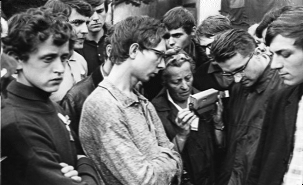
This is Shortwave Radiogram
Please send reception reports to
radiogram@verizon.net
Image: This ashei magnolia, which typically grows in Florida, was
cultivated by Jim Marshall in Ottawa, Ontario. From
bit.ly/2NboXqa ...
Sending Pic:224x171C;
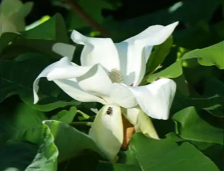
Image: Here in Washington DC, lilies grow on Florida Avenue NW.
From
bit.ly/2yUmrRS ...
Sending Pic:219x163C;

Image: A whale made of plastic waste gathered from the beaches of
Hawaii "leaps" out of a canal in Bruges, Belgium. From
bit.ly/2KgZ9ej ...
Sending Pic:225x130C;
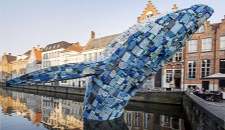
Image: Painting of Main Street in Annapolis, Maryland, by Pen
King. From
etsy.me/2Mumlm8 ...
Sending Pic:223x184C;

Shortwave Radiogram returns to MFSK32 ...
RSID: <<2018-06-30T16:26Z
MFSK-32 @
9400000+1500>>
Transmission of Shortwave Radiogram is provided by:
WRMI, Radio Miami International, http://wrmi.net
and
Space Line, Bulgaria, http://spaceline.bg
Please send reception reports to
radiogram@verizon.net
And visit http://swradiogram.net
Twitter:
@SWRadiogram
I'm Kim Elliott. Please join us for the next Shortwave
Radiogram.
Sending Pic:192x151C;
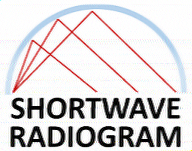
http://www.rhci-online.net/radiogram/radiogram.htm
|
QTH: |
D-06193 Petersberg (Germany/Germania) |
|
|
Ant.: |
Dipol for 40m-Band & Boomerang Antenna 11m-Band |
|
|
RX for RF: |
FRG-100B + IF-mixer & ICOM IC-R75 + IF-mixer |
|
|
Software IF: |
con STUDIO1 - Software italiano per SDR [S-AM-USB/LSB] + HDSDR 2.76 stable [2017-02-02] - for scheduled IF-recording |
|
|
Software AF: |
Fldigi-4.00.12 + flmsg-4.0.3 images-fldigifiles on homedrive.lnk |
|
|
OS: |
German XP-SP3 with support for asian languages |
German W7 32bit + 64bit |
|
PC: |
MEDION Titanium 8008 (since 2003) [ P4 - 2,6 GHz] |
MSI-CR70-2MP345W7 (since2014) [i5 -P3560 ( 2 x 2,6GHz) ] |
